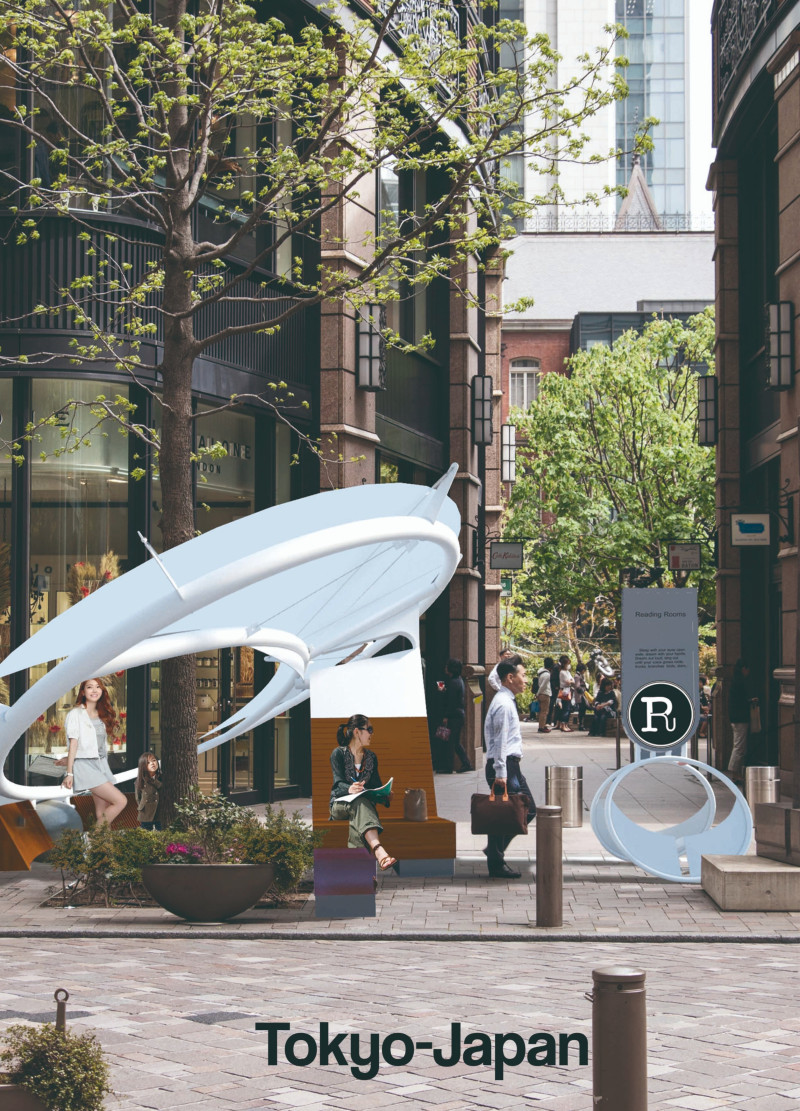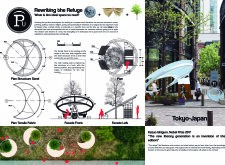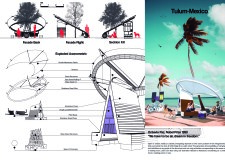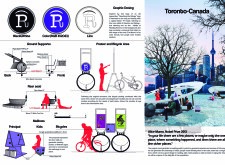5 key facts about this project
The design's circular layout symbolizes continuity and wholeness, providing a sense of refuge while maintaining connectivity with the urban fabric around it. Essential to its function, the project serves as more than just a reading space; it acts as a cultural hub where literature and community converge. The integration of various seating arrangements, interactive reading areas, and meeting zones fosters dynamic user experiences.
Unique Design Approaches
The "Rewriting the Refuge" project distinguishes itself through its innovative approach to materiality and structural composition. The use of a steel framework offers robustness while allowing for flexible design. This framework is complemented by tensile fabric elements that create a sheltered environment, effectively filtering natural light and enabling comfortable outdoor experiences.
Environmentally responsive design is another significant aspect. The project adapts to various geographical contexts and climate conditions, using local flora and landscape features to enhance its integration within each specific location. The façade incorporates multi-directional panels that reflect and diffuse sunlight, ensuring optimal lighting conditions while maintaining privacy within the space.
Architectural Details
Several architectural components underscore the project’s usability and aesthetic coherence. The carefully conceived seating arrangements mimic the form of open books, providing ergonomic comfort and an inviting atmosphere. This design approach not only prioritizes user experience but also embeds literary themes directly into the architectural form.
Materials selected for the project include steel, tensile membrane fabric, acrylic panels, aluminum, and concrete. Each material serves a specific function, contributing to the structural integrity while ensuring durability and ease of maintenance. Moreover, the incorporation of eco-friendly and sustainable materials highlights the project’s commitment to environmental consciousness.
The "Rewriting the Refuge" project serves as a model for how architecture can support community engagement through the lens of literature. For those seeking deeper insights into architectural concepts and spatial arrangements, reviewing the architectural plans, sections, designs, and ideas will provide a comprehensive understanding of this impactful project. Explore the project presentation for further details on its unique aspects and architectural vision.


























